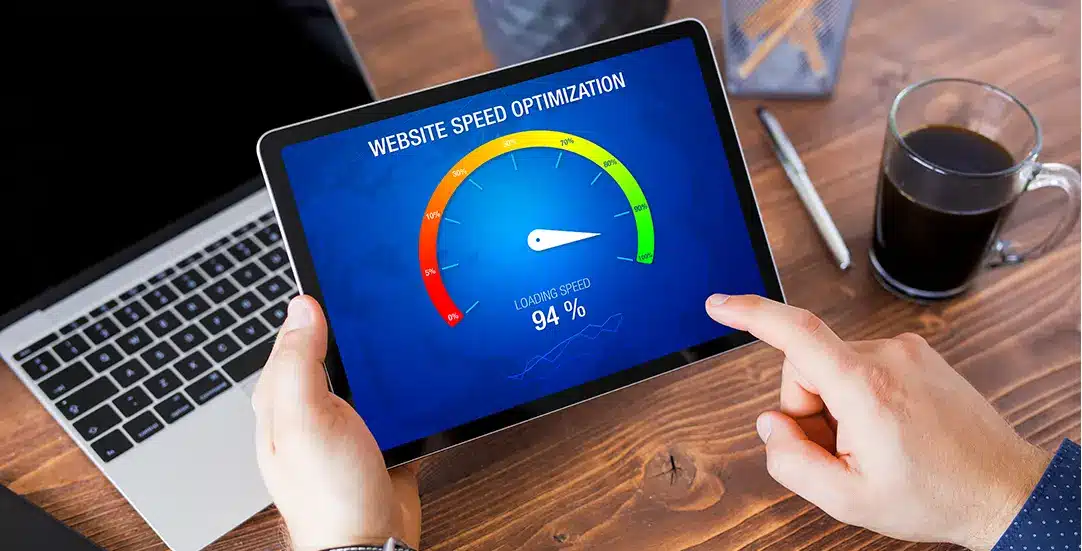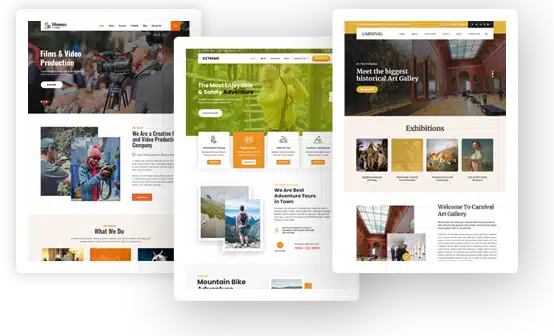How To Optimize Your Website Speed And Reduce Loading Time With Simple Tips And Tricks

Millions of businesses across the world are vying for customer attention. So, providing a great user experience on your website becomes more important than ever.
And one important aspect of user experience is your website speed. But if your website takes too long to load, users will be more likely to bounce (and never come back).
A slow website not only increases your bounce rate but also affects your search engine optimization (SEO) rankings. Search engines like Google consider page speed an important ranking factor. A slow website can rank lower in search results, reducing visibility and organic traffic.
But don’t worry. We’re here to help. Today, we’re sharing valuable tips and tricks to help you optimize website speed and reduce loading time.
Let’s dive in.
Begin With Measuring Your Website Speed
The first step to optimizing your website’s speed is to measure it. That means understanding how quickly your mobile website loads for users. But what’s the ideal load time?
According to a recent industry report:
- The ideal load time for mobile websites is 1–2 seconds.
- 53% of mobile website visits are abandoned if the page takes longer than 3 seconds to load.
- A 2-second load delay leads to an 87% abandonment rate.
- Google targets load times under 0.5 seconds.
There are many different speed test tools you can use to check and measure how fast your web pages load. Two popular options for beginners are Pingdom Website Speed Test and GTmetrix.
However, we recommend starting with Google’s PageSpeed Insights. This is a simple tool that lets you measure and test the speed of your web pages on both desktop and mobile devices.
Measuring your site’s speed is easy with these tools, but the real challenge is interpreting your results and taking the proper action to improve your load times (especially if they are less than ideal).
When you optimize your website’s speed, you can improve the user experience, reduce bounce rates, and boost your search engine rankings.
StudioSuits, a popular brand known for quality men’s seersucker suits, is a great example of how effective website optimization can lead to success. Their website loads very quickly, even though it has many high-quality images and elements.
The result? Shoppers can browse their suit collections without getting frustrated. The fast loading speed also helps StudioSuits rank higher in search engine results pages (SERPs).
It’s a simple case study that proves investing in website speed can be very beneficial for businesses (regardless of industry).
7 Surefire Ways to Optimize Website Speed and Reduce Load Time
Is your website taking forever to load? Here are a few fixes that can help you reduce website load time and enhance user experience.
1. Optimize your Images
Images are the largest files on your site, so optimizing them can help you reduce load times. Here’s how:
- Choose the correct image file format. The most common image file formats are JPEG, PNG, and GIF. JPEG is the best image format for colorful photos and images. PNG is the best format for simple or transparent images. GIF is the best format for animations.
- Compress your images. There are many ways to compress images, but the most common method is lossy compression. Lossy compression reduces the file size of an image by removing some data from the image. This method may reduce image quality slightly, but not significantly.
- Resize your images. Your image should be no larger than necessary to display correctly on the page. There are many photo editing software programs available to resize your images.
- Use lazy loading. This technique allows you to delay image loading until needed. This can improve the loading speed of pages with many images.
You can also integrate text-to-speech functionality to offer visitors an alternative to heavy multimedia content. Instead of waiting for video or audio files to load, users can opt for swift, real-time text conversions to audible formats.
2. Reduce the Number of HTTPS Requests
Another effective way to optimize website speed is to reduce the number of HTTPS requests.
When a browser loads a web page, it has to make a separate HTTP request for each file on the page (images, CSS files, JavaScript, and fonts). Think of it this way. The more HTTPS requests, the longer it takes for the page to load.
Here are some quick ways to optimize website speed:
- Combine CSS and JavaScript files. This will reduce the number of HTTP requests the browser has to make.
- Minimize code. This removes unnecessary spaces and comments from CSS and JavaScript files, making the files smaller and reducing the number of bytes the browser downloads.
- Use a content delivery network (CDN). With a CDN, your website files are stored on a network of servers across the globe. When users visit your website, their browser downloads files from the server closest to them, reducing load times.
- Consolidate documents. If your site offers multiple downloadables, create a single combined PDF to reduce the number of downloads.
You can also use inline CSS and JavaScript, CSS sprites, and lazy loading to reduce the number of HTTP requests.
3. Use Browser Caching
Browser caching is a technique that allows browsers to store copies of static files, such as images, CSS files, and JavaScript, on the user’s computer.
In other words, the browser doesn’t need to download these files every time a user visits your site, helping you optimize website speed.
To enable browser caching, add an expires header to your HTTP response. This header tells the browser how long to store the file in its cache.
For example, you can set an expiration header of one year for an image file that doesn’t change often. That way, the browser will only download the image file once and then use the cached version for all additional visits to your website. You could also explore how coworking technology platforms optimize performance through smart caching strategies.
Or, you can leverage free caching plugins if you operate a site on WordPress.
4. Reduce Third-Party Scripts
Third-party scripts can significantly slow down websites. These scripts are often loaded from external servers, which can add HTTP requests and increase your overall page load time.
Here are some tips for minimizing third-party scripts to optimize website speed:
- Identify and remove unnecessary scripts. Use a tool like Chrome DevTools to identify all the scripts loaded on your page. Next, review the list and remove any unnecessary scripts.
- Use a tag manager. Tag Manager lets you manage all of your third-party scripts from one place. This can make it easier to identify and remove unnecessary scripts and can also help improve your site’s performance by reducing the number of HTTP requests.
- Use asynchronous loading. Asynchronous loading allows you to load scripts without blocking the rendering of your page. Visitors will start seeing your page content sooner, even if some scripts haven’t finished loading.
5. Reduce the Number of Redirects
Redirects can decrease your site’s loading speed by adding an extra step to the loading process.
Each redirect requires a new HTTP request, which can take time. Additionally, redirects can create redirect loops, preventing the browser from fully loading the page.
There are a few things you can do to reduce the number of redirects and optimize website speed:
- Find and remove any redirects that are no longer needed. You can use a site crawler or testing tool to identify all redirects on your site and then remove those no longer needed.
- Use permanent (301) redirects whenever possible instead of temporary (302) redirects. A permanent redirect tells search engines that the old page has been permanently moved to a new location. It’s a great way to maintain the SEO value of the old site. Temporary redirects, on the other hand, tell search engines that the old page may be moved to its original location at some point. This method can cause search engines to index old and new pages, hurting your SEO.
- Use the canonical tag to tell search engines which version of a page is the primary one. If you have multiple versions of a page (for example, a desktop version and a mobile version), you can use canonical tags to tell search engines which version is used. These tags help avoid duplicate content issues and improve your SEO.
6. Use Effective Third-Party Services
Another way to optimize website speed is to use third-party services for important website functions. Here are some of the most important ones:
- Hosting: Choose the right hosting provider that offers faster servers, higher uptime, and support for the latest technologies. This can lead to significant improvements in website loading times. You can also use an easy to use website builder.
- DNS: Choose DNS services that offer faster DNS servers and more reliable DNS resolution. This can reduce the time it takes for a visitor’s browser to resolve your website’s domain name and start loading the page.
- Cybersecurity: Third-party cybersecurity services can help improve website loading times by securing your website from phishing threats malicious attacks impacting your site’s performance or availability.
By using third-party services for these tasks, you can free up your website server to focus on its core function: delivering web pages and content to visitors
7. Prioritize Website Accessibility
At its core, an accessible website is a user-friendly website.
Sites designed with accessibility in mind cater to a broader audience, including those with disabilities. By enhancing their experience, you naturally improve your site’s efficiency and speed for everyone.
With the help of an accessibility checker, you can identify potential issues that could hinder your site’s performance and guarantee that you offer a seamless user experience to all visitors.
Optimize Website Speed To Reduce Loading Time
Every second counts in an increasingly online world — making your website speed a critical factor that can have a significant impact on your online success.
By implementing the tips and tricks we’ve shared today, you can dramatically improve your website’s performance, reduce loading times, and create a better user experience.
Prioritizing speed not only improves search engine optimization (SEO) rankings but also helps to keep your visitors engaged and satisfied.
So, don’t wait — optimize your website speed today to offer a faster, more responsive online experience. You won’t regret it. And neither will your bottom line.
Nikola Pantic Author
Nikola Pantic is a Partnerships Manager at uSERP, connecting with partners and nurturing those partnerships through mutual collaboration, and a seasonal writer helping shape various industries through the written word.

